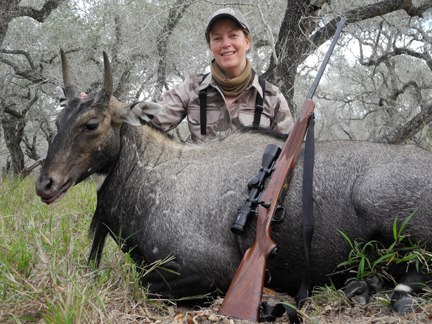Hunting Super Exotics Conserves Rare Big Game
If the last Eld’s deer disappears from the forest, will anyone notice?
The answer, as is so often the case, is this: Hunters will. And they’ll do something about it.
Eld’s deer had disappeared from the forests and plains of Thailand, where they are the national animal. Poaching and habitat loss had decimated them, and none were believed to have survived. Of course, most people didn’t notice, because most people don’t even know what an Eld’s deer is.
Serious trophy hunters know. They know that the Eld’s deer is a striking animal, with antlers shaped like a streamlined caribou rack. A hunter wanting an Eld’s deer today must go to a Texas game ranch, the only place on earth where these very rare animals can be pursued.
If shooting one of the world’s rarest deer seems irresponsible, consider this: If Texas game ranches quit allowing Eld’s deer hunting, the animals would find themselves in far worse trouble.
Eld’s deer are one of the big-game species involved in a program called Ranching for Restoration, run by the wildlife conservation and hunter advocacy organization Conservation Force. John J. Jackson III, chairman and president of the organization, ranks among the world’s most active hunting advocates. The Ranching for Restoration service, which Conservation Force provides free of charge, has become the leading program for conserving some of the world’s rarest big-game species.
Here’s how it works: Texas game ranches must obtain special permits to allow breeding and culling of four rare species, and 10 percent of the trophy fees charged to hunters for these species go toward conservation programs in the animal’s native habitat. In addition to Eld’s deer, these species include red lechwe, Arabian oryx, and barasingha (or swamp deer).
Jackson, a lawyer specializing in wildlife law, completes the necessary permitting process for the rancher free of charge, and ensures the trophy fees go directly to programs that enhance wild populations.
These animals, called “super exotics” by the game ranching industry, command trophy fees of $5,000 to $10,000 because they can only be hunted on select game ranches. Conservation Force applies a percentage of that funding to active global conservation projects.
For example, last year Thailand welcomed home some Eld’s deer, thanks to a reintroduction program that received significant funding from the Ranching for Restoration program.Similarly, in Zambia, trophy fees from red lechwe pay for anti-poaching patrols and habitat preservation, coordinated with the Wildlife Conservation Society. Unlike in many parts of their range, lechwe thrive in these areas.
“It’s one more instance where American hunters are paying their way for conservation,” says Jackson. “Ranching for Restoration is doing more for these animals than any other conservation program.”
Texas game ranches, often tens of thousands of acres, offer hunting for a wide variety of exotic species. This hunting keeps large ranches intact and undeveloped, and provides habitat or a variety of native species. But these ranches also attract a lot of criticism, even from hunters.
Jackson wants both hunters and the nonhunting public to recognize the conservation work these ranches make possible. He notes that the largest populations of some species—scimitar-horned oryx, addax, Dama gazelle—are now found in Texas, not in their native lands.
“Some hunters may not care to hunt exotic game that is captive bred,” says Jackson. “But at Conservation Force, we put conservation first. This program is good for endangered species, and it’s good for trophy hunting.”
Jackson notes that every year, animal rightists introduce legislation to ban or restrict exotic game hunting, which he believes could have negative impacts on global big-game conservation.
“Exotic hunting is the principal tool of saving these endangered species,” he says. “If this hunting were outlawed, it would be a tremendous loss. These species would lose the conservation programs most effective at ensuring their survival.”
Eco-tourists don’t travel to see a barasingha or an Arabian oryx. Red lechwe don’t make it onto the cover of environmental fundraising brochures. But serious trophy hunters can add these animals to their collections—and know that they’re leading the way in conservation.
“At Conservation Force, we want hunting to pay for the conservation of species,” says Jackson. “That’s what the hunting of super exotics in Texas is doing. It’s ensuring that we still have Eld’s deer and other animals, not only on game ranches, but also in their native lands.”











